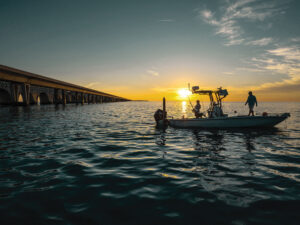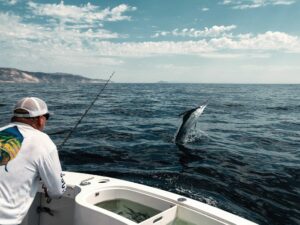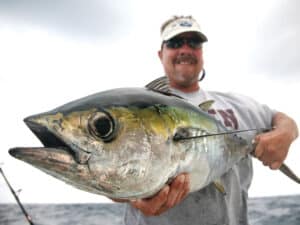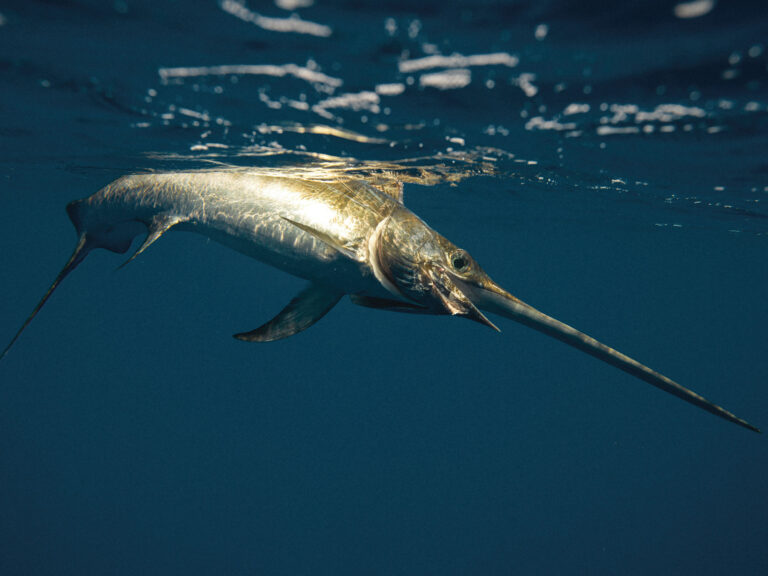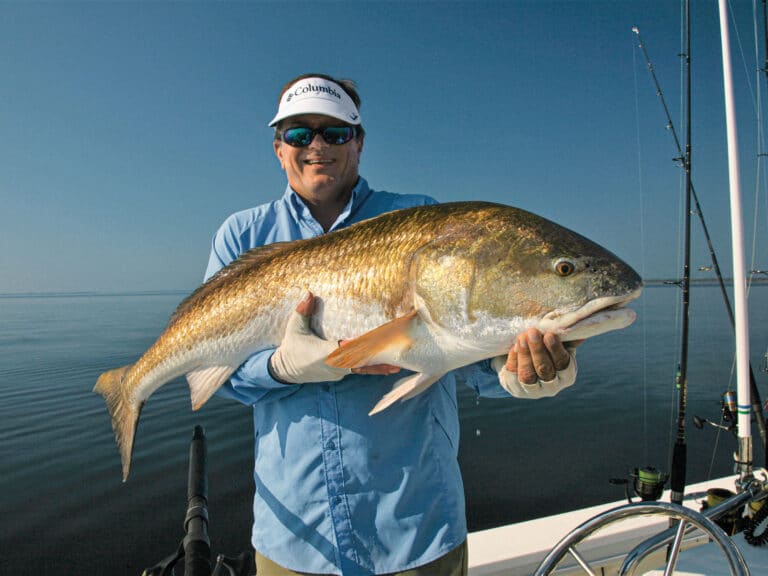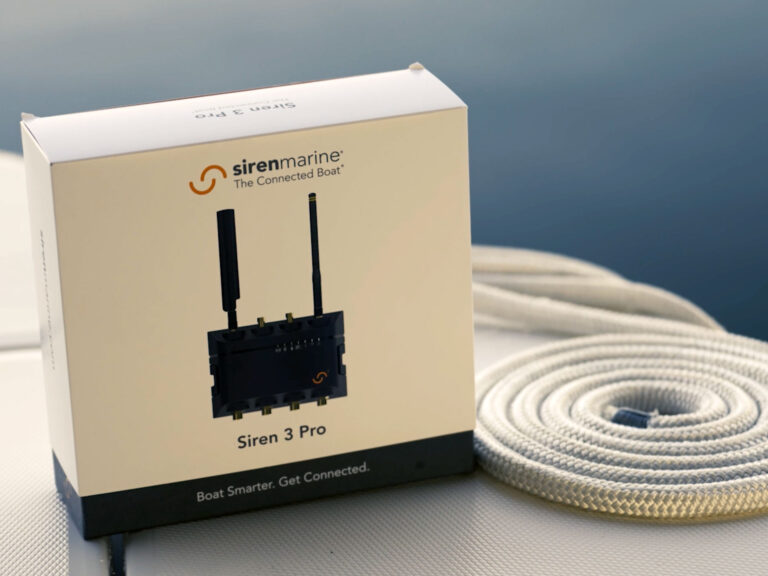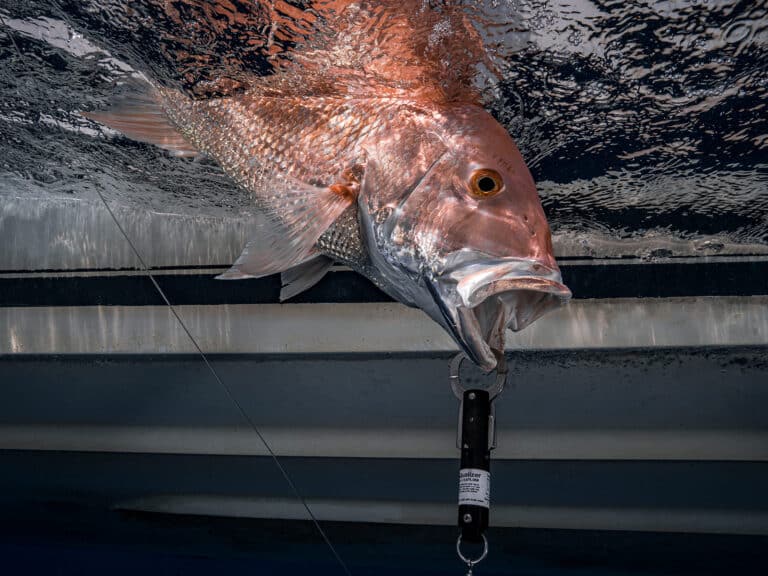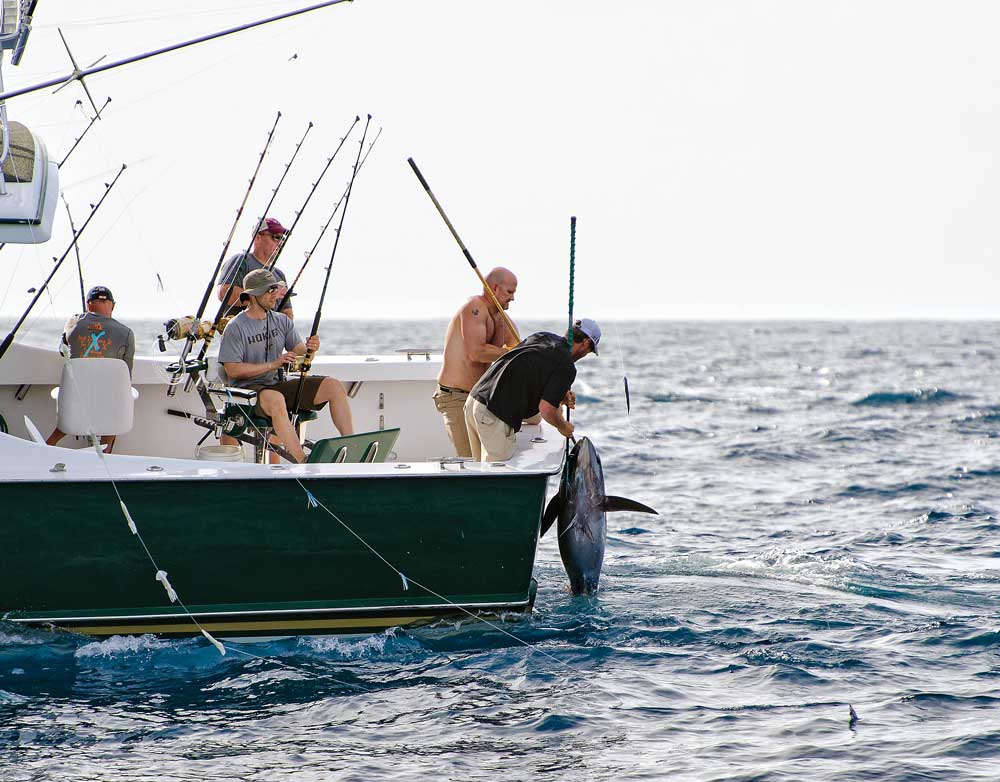
I’ve caught thousands of fish in countless places, but some bites qualify as life events. As we trolled along the edge of Norfolk Canyon, 50 miles off Virginia Beach, the setting sun threw red and gold onto the calm sea. We had just hooked and fought a bigeye for 30 minutes before pulling the hook. With the golden hour ticking away, we quickly re-rigged and circled back across the edge. I watched an Ilander pop and swim on the flat line, suddenly slowing.
The inky water began to bulge. The lure seemed to come to life, splashing across the surface like a flushed bird. The bulge turned into an ebony torpedo. Then a silver-and-gold missile descended on the bait with a violent explosion. That’s bigeye tuna fishing in the Mid-Atlantic. The fish show up almost anywhere, at almost any time, with little rhyme or reason. But when a squadron of 300-pounders lights up the spread, expect broken tackle and broken dreams, unless you’re ready.
That’s what happened to my buddy Capt. Randy Butler one summer. “We had a whole pack come in,” he recalls, “but we only hooked two.” One of the fish weighed 280 pounds and the other was 305, the largest bigeye landed in Virginia that year. Butler is a big fan of the bigeyes. He runs 18-hour marathon trips that cover the dawn and dusk bigeye bites. He says the season starts on the first full moon in July and runs through October. “We’ll catch them into October if the water stays over 70 degrees,” he says.
How to Catch Bigeye Tuna

Warm water is key to the bigeye bite. “Some summers it’s slow because we don’t get the blue water over the canyon,” he admits. When the warm blue water flows over structure, he looks for a sharp drop-off and works the edge of the 100-fathom line. “I go deep to shallow, then turn back deep again,” he explains. While he zigzags up the drop, he looks for whales, a good sign of bigeyes in the area. The best bite seems to be on a hard northeast wind. “It’s rough as hell, but they like it,” Butler says.
Bigeye tuna are famous for having a paper mouth. Many bites end in disappointment. To counter this problem, Butler cuts the fight time with heavy tackle. “We’ve gone to International 130s,” he says. “We beat that 305-pounder in 12 minutes.” The second fish took 22 minutes. “We don’t give them enough time to get off.”
Butler’s rigging is up to the task. He runs a 25-foot top shot of 200-pound mono, an 8-foot leader of 200-pound fluorocarbon, and an 11/0 hook. His favorite lure? “My bigeye killers are a White Knight and a pink-and-white.” That’s a Sea Witch with a white skirt and a blue head, and a pink-and-white skirt with a pink head. He runs the lures way back on his center lines. “Dump half the spool on an 80 wide when you’re setting these lures to troll,” he says. The best time to catch a bigeye is at dawn or dusk. Butler even trolls through the night for bigeyes. “They’ll eat all night during a full moon,” he says. “And when it’s foggy, you can catch them all day long.”
When to Fish for Bigeye Tuna
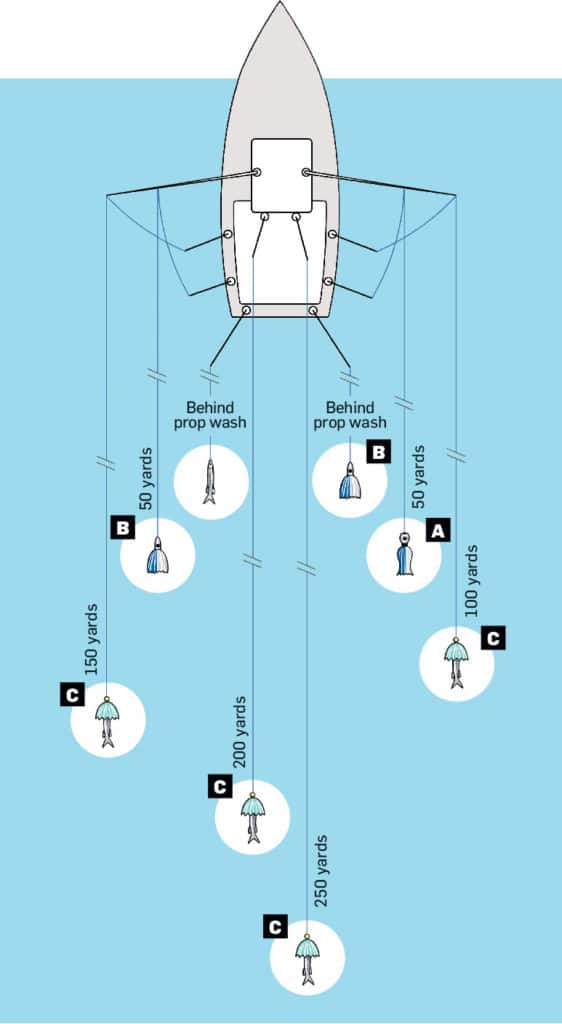
Ghosts in the Graveyard. That was the scenario a few years back as we picked our way through the pea soup on Capt. Jason Snead’s Oregon Inlet-based Dream Girl. The seas lay flat in the graveyard of the Atlantic, and the fog blocked out the early summer sunlight. Somehow, Snead found a temperature break and a weed line. We were trolling Sea Witches on 50s when our dolphin party got interrupted by a big bite. I only glimpsed the fish as it snatched a Sea Witch on the short rigger. By the time we had the lines cleared, the reel was down to the backing and the angler looked scared. After an hour-long back-and-forth battle, Snead finally coaxed the fish to the back of the boat, and mate Capt. Jimmy Hillsmand reached in with the gaff.
After the fish was on ice, and the angler had iced down his arm, shoulder, legs and back, a testament to the strength of these fish, the fog burned off. Snead made another half-dozen turns through the same area, but we didn’t get another bite. Other boats circled the area, but nothing. “That’s bigeye fishing,” Snead chuckled as we returned to dolphin fishing. Even though the canyons, cliffs and points off the Outer Banks offer the best bigeye fishing in the world, these fish play by their own rules.
Snead says that bigeye can show up anytime. “You can catch them in the middle of the winter,” he says, “when warm water moves in over the steep edges and pinnacles along the 100-fathom drop.” The best season remains late spring through early fall. “Anytime you get a temperature break over the 100-fathom drop, you have a shot at catching bigeye tuna.” But there’s no guarantee. When bigeyes are in the area, Snead sets out with large skirted ballyhoo, Ilanders and Sea Stars on 200-pound leader. “You’ve got to have your mess straight,” he stresses. If the fleet has found bigeyes over several days, he’ll head to the same area in hope the fish are still on-site.
Bigeye Tuna are Tough to Predict
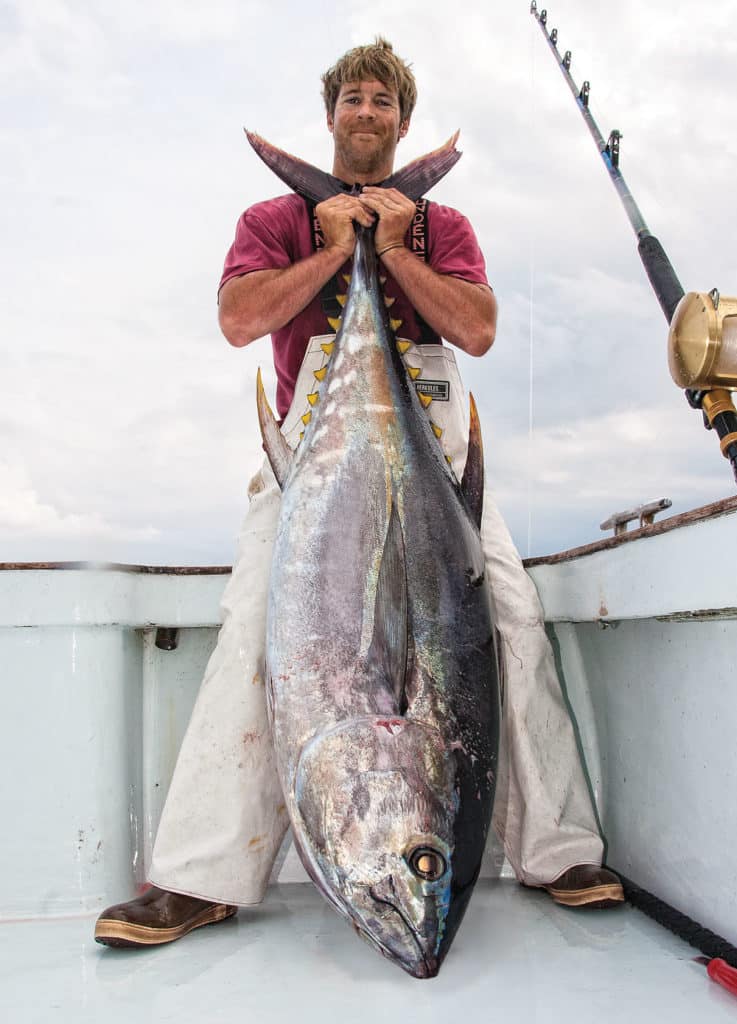
Most of the time, when one boat gets covered up, the rest of the fleet responds quickly. “Sometimes we’ll mark them, other times they just come out of nowhere,” he says. The best plan is to move in on a boat that is tied into a bigeye. “You might only get one or two shots before they’re gone.” His advice for bigeye success? “Patience,” he says. “Keep making circles over the structure until the course lines on your chart plotter are solid black.”
That’s how Snead had his best bigeye tuna day ever. “A bunch of boats hit them right out of the gate,” he recalls, “then the bite died down.” Snead worked down the edge with two other boats. “We were trolling down the edge 300 yards apart when all three of us got hit at once,” he recalls. “We hit a school of bigeye over a mile wide, caught seven or eight out of 10 and ended up with 15 for the day.”
For Snead and Butler, bigeyes are wild cards in their offshore hand. Nothing breaks monotony like a bigeye bite. Snead gets excited when he talks about it. “Half the time, they hit so hard, they miss the lure,” he says. Butler loves that first attack: “They burn off half a spool before you get the lines cleared.” He claims bigeyes over 200 pounds are the ultimate predators. “I think bigeye tuna invented the term big hole, bent pole.”
Bigeye Tuna Frequently Asked Questions (FAQs)
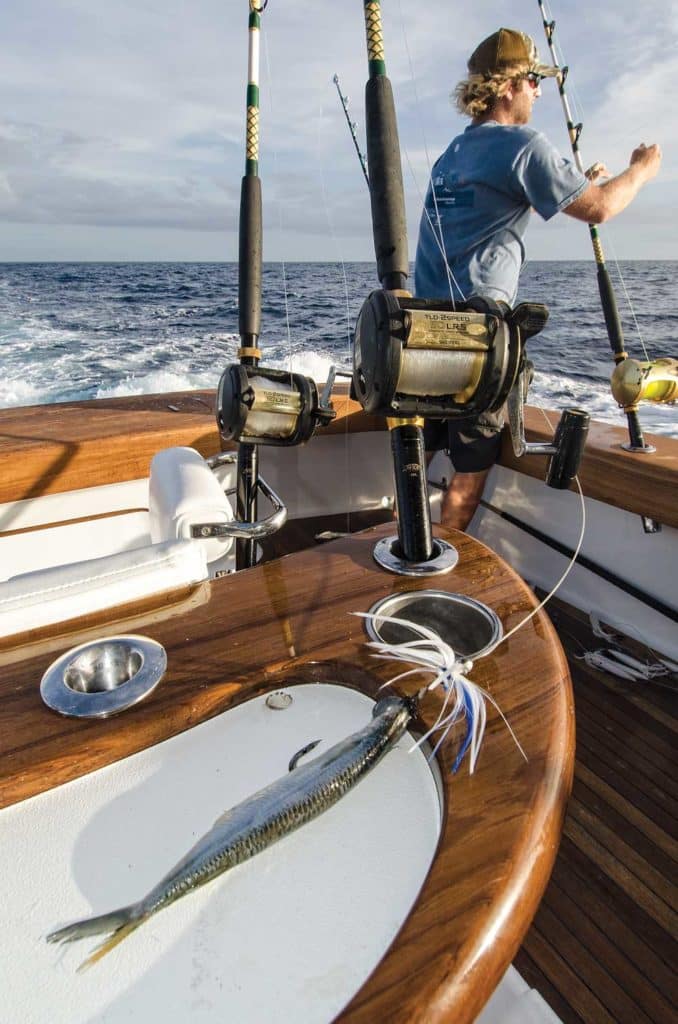
- Best water temperature?: Watch for warm water, above 70 degrees.
- Best time of the day? Concentrate on dawn and dusk, when bigeyes are most active. Low light conditions in the fog produce too.
- Best Mid-Atlantic waters? Focus your trolling efforts along the 100-fathom line in the canyons.
- Best time of year? May through October.
- Best boats to fish from?: Boats longer than 25 feet in competent hands.
Best Bigeye Tuna Fishing Tackle
- Rods: Heavy-action, 6-foot conventional, stand-up
- Reels: Matching 50- to 130-pound-class conventional
- Line: 50- to 80-pound main line, 200-pound top shot and leader
- Trolling Lures: Ilander, Sea Star and Sea Witch, with 11/0 hooks

